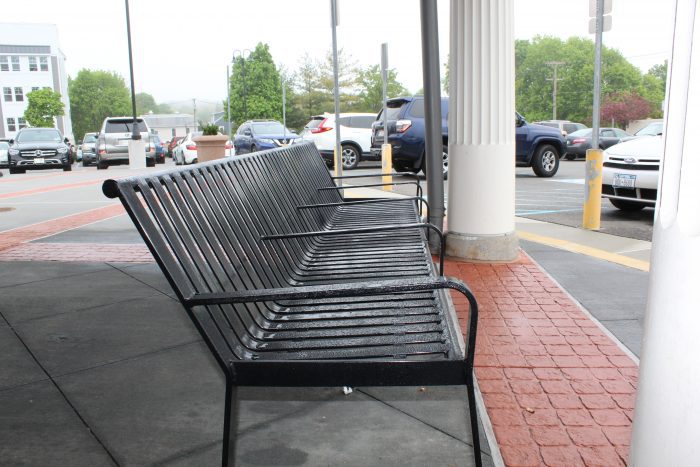
By Amanda Olsen
Recent reporting on benches at the Port Jefferson train station [Port Times Record, May 26] prompted further investigation into this practice in public spaces throughout the area.
When reached via email for comment, MTA spokesperson, Sean Butler, defended the present layout of Port Jeff station.
“Long Island Rail Road’s Enhanced Station Initiative brought transformative renovations to the Port Jefferson station in 2019,” he said. “We are committed to working closely with the community to give our riders the best possible experience, including through the siting of station benches.”
Butler pointed to the various changes made to the layout of the station, which he suggests sufficiently assuage concerns from passengers and residents.
“The ESI project installed three benches inside the station house in 2019,” he said. “One existing bench was also provided inside the new platform shelter shed. In response to customers, LIRR added an additional outdoor bench this year.”
This seating arrangement seems to be the standard for railroad stations across Long Island. Browsing photos on the LIRR renovation website reveals divided benches at every building.
Hostile design in perspective
While employing design elements to manage public behavior is nothing new, modern hostile architecture gained momentum in the 1980s and ’90s as homelessness in the United States reached crisis levels.
Hostile architecture in seating is about more than just benches divided by armrests. Sometimes a bench can be too deep or too shallow, or it slopes. Often through choice of material, such as rounded metal pipes, these benches are made intentionally uncomfortable. Through hostile design, the shape of the bench causes eventual discomfort to the user, and the person moves on.
It can also mean opting for seats that aren’t seats. Select subway stations in New York City have added “leaning bars” instead of more benches. These wooden blocks are supported by a metal frame along the wall that provides little support for the elderly or the physically disabled.
Surfaces that would normally be flat can also receive this treatment. Ridges and spikes keep people from sitting or leaning against walls and also deter skateboarders. Sloping or rounding the surface has a similar effect. Longer spikes, reminiscent of bird barriers, keep people from sleeping on warm exhaust vents.
Cordoning off doorways, windowsills and stairs to prevent people from resting or loitering is a common practice, but hedges can also act as barriers. Fences with points keep dogs from investigating shrubs and other plants.
These measures are usually implemented to keep people from lingering or sleeping in public spaces. But they also have the unintended consequence of making spaces uncomfortable for other populations.
Changing the configuration of benches can often render them unusable for those who need them most. Seating is of particular importance for the elderly and disabled. Someone whose limitations do not allow them to get up easily might struggle in the space created by the dividing armrests. Larger people also cannot use this narrow seating.
The only guidance for outdoor bench armrests outlined in the Americans with Disabilities Act states, “Benches will be most useful if they have full back support and armrests to assist in sitting and standing.” Placing armrests at intervals along the seat of the bench is a convenient manipulation to skirt this advice.






